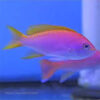Dragons in Chinese Wedding Customs and Ceremonies

In Chinese culture, the dragon holds significant symbolic meaning, representing power, wealth, and prosperity. It is a creature that bridges the earthly realm with the divine, and its presence in wedding customs is both revered and meaningful. Dragons are often incorporated into Chinese wedding ceremonies to invoke good fortune, happiness, and a harmonious marriage. These ancient traditions continue to influence modern weddings, making the dragon a central symbol in the celebration of love and unity.
In this article, we will explore the role of the dragon in Chinese wedding customs and rituals, from the symbolism behind its appearance to the various ways it is used in wedding decorations and ceremonies.
1. The Symbolism of the Dragon in Chinese Weddings
In Chinese culture, the dragon is often paired with the phoenix, which represents femininity, grace, and beauty. Together, the dragon and phoenix are seen as the perfect couple—an embodiment of a balanced and harmonious relationship. The dragon symbolizes the groom, while the phoenix represents the bride. This combination reflects the union of male and female energies, creating a harmonious and prosperous marriage.
The dragon, as a symbol of strength and vitality, is believed to bring good fortune, wealth, and a prosperous future to the couple. It is also associated with fertility, as it is said to bring blessings for the couple to have children. This connection between the dragon and fertility is why dragons are commonly featured in wedding decorations, symbolizing the hope for a fruitful and happy life together.
2. Dragon Embroideries and Wedding Attire
One of the most noticeable ways the dragon appears in Chinese weddings is through intricate embroidery on the wedding attire. In traditional weddings, the groom often wears a robe embroidered with dragon motifs, symbolizing his strength, masculinity, and authority. These robes are usually made of red silk, which is considered a lucky and auspicious color in Chinese culture. The red dragon embroidery is not only a decorative element but also serves as a way to attract positive energy and fortune.
The bride, too, may wear clothing adorned with dragon and phoenix symbols. Often, the bride’s gown features a delicate embroidery of the phoenix, representing her beauty and femininity, while the groom’s attire includes the dragon as a symbol of his role as the protector and provider. The matching of these two symbols reinforces the connection between the bride and groom, celebrating their unity and mutual respect.
In some modern weddings, the dragon and phoenix symbols can be found in other wedding attire accessories, such as cufflinks, necklaces, and hairpieces, continuing the tradition of these ancient symbols in contemporary settings.
3. The Role of the Dragon in Wedding Decorations
The dragon’s presence is also highly visible in wedding decorations, especially in more traditional or formal ceremonies. One of the most iconic elements is the dragon-themed wedding arch. This grand structure is typically adorned with dragon motifs and is often placed at the entrance of the wedding venue. The arch represents the threshold the couple must cross to begin their new life together, and the dragon is seen as a guardian that brings blessings to the marriage.
Dragons are also commonly featured in wedding invitations and other stationery. Intricate dragon designs are often used on the wedding invitation covers, adding a touch of auspiciousness and a sense of cultural pride to the celebration. The dragon’s presence in these details helps set the tone for a wedding steeped in tradition and filled with blessings.
In addition to wedding invitations, dragon motifs are often incorporated into table settings, centerpieces, and decorations within the wedding venue itself. These designs are meant to enhance the atmosphere of joy and celebration, while simultaneously attracting luck and prosperity for the couple’s future.
4. The Dragon Dance at Chinese Weddings
One of the most lively and festive ways the dragon is involved in Chinese wedding celebrations is through the dragon dance. This traditional performance is often included in the festivities to bring good luck and drive away negative energies. The dragon dance is performed by a team of dancers who manipulate a long, serpentine dragon, moving it in undulating patterns as it “dances” through the wedding venue. The rhythm of the drum and cymbals accompanying the dance is believed to attract positive energy and ensure that the couple’s life together is filled with joy and abundance.
While the dragon dance is more commonly associated with Chinese New Year and other festivals, it is increasingly becoming a unique feature at weddings, particularly in larger celebrations. The dragon dance adds an element of excitement and festivity, making it a memorable experience for both the bride and groom as well as the guests.
5. The Dragon in the Tea Ceremony
In Chinese weddings, the tea ceremony is an essential ritual that symbolizes the couple’s respect and gratitude towards their parents and elders. The tea ceremony is often accompanied by symbolic gestures that represent the couple’s commitment to family and tradition.
In some regions of China, the dragon symbol is included in the tea ceremony, particularly when the groom presents tea to the bride’s parents. The dragon’s presence in this context reinforces the idea of the groom as the protector and provider for the bride, while the tea itself symbolizes the couple’s deep respect and bond with their families. The dragon’s presence further elevates the significance of this important ritual.
6. The Dragon and Wedding Gifts
Another way dragons are incorporated into Chinese wedding traditions is through wedding gifts. In many cases, the groom’s family will present the bride with a dowry that includes items adorned with dragon motifs, such as jewelry, furniture, or decorative items. These gifts are meant to symbolize the groom’s wealth and his ability to care for the bride.
Similarly, the couple may receive wedding gifts from friends and relatives that feature dragon imagery, symbolizing their well-wishes for the couple’s future. These gifts are often cherished by the couple as symbols of good fortune and prosperity.
7. The Meaning Behind the Dragon in Chinese Wedding Rituals
The use of the dragon in Chinese wedding customs goes beyond just symbolism—it represents a deep connection to cultural beliefs about life, prosperity, and the natural world. The dragon is seen as a powerful force of nature, capable of influencing the elements, bringing rain for crops, and ensuring harmony in the universe. Its role in the wedding ceremony is to invoke these qualities, bringing balance and good fortune to the marriage.
In Chinese culture, weddings are not just a union between two people, but a joining of families, communities, and even the spiritual world. The dragon, as a celestial being, serves as a bridge between the earthly and the divine, ensuring that the couple’s journey together is blessed with good fortune, happiness, and protection.
Conclusion
The dragon plays a crucial and multifaceted role in Chinese wedding traditions, serving as a powerful symbol of prosperity, strength, and good fortune. From its incorporation in wedding attire to its presence in ceremonies and decorations, the dragon is a reminder of the enduring cultural values that shape Chinese wedding customs. As Chinese weddings continue to evolve, the dragon remains a timeless symbol of the union between two people, their families, and the universe itself. Whether in traditional or modern ceremonies, the dragon ensures that every couple’s marriage is blessed with love, abundance, and lasting happiness.

